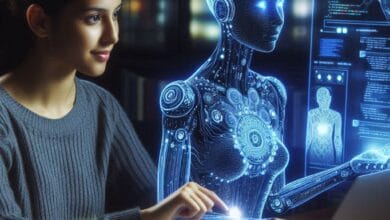OpenAI’s Humanoid Leap: Bridging Humans and AI
Video Source: Figure AI official YouTube Channel
OpenAI, in collaboration with the robotics startup Figure AI, has unveiled a significant advancement in the field of humanoid robotics, presenting a robot with the capability to interact with its environment in a remarkably human-like manner. This development, highlighted in a recent video demonstration, represents a leap forward in visual language processing and environmental interaction, signaling a new era in artificial general intelligence (AGI).
Technical Achievements
The demonstration showcased the humanoid robot’s ability to understand and execute tasks based on visual cues and verbal commands, displaying a level of dexterity and perception that blurs the line between human and machine capabilities. Key achievements include:
- Speech to Speech Reasoning: A standout feature of OpenAI’s humanoid robot is its capability for “speech to speech reasoning,” a sophisticated form of interaction where the robot processes verbal commands and responds in kind. Unlike simpler text-to-speech systems, this advanced AI can interpret the nuances of human speech, factor in visual environmental data, and then articulate responses in a way that mimics human conversational patterns. This breakthrough is indicative of the robot’s ability not just to follow commands but to understand and engage in dialogue, reflecting a significant advancement towards artificial general intelligence (AGI).
- Visual Language Processing: The robot employs an advanced visual language model, allowing it to interpret its surroundings, identify objects, and understand their potential use or significance.
- Human-like Interaction: Through its interactions, the robot demonstrated an ability to engage in tasks such as offering food (an apple) from a table or organizing dishes, based on the contextual understanding of the environment.
- Voice and Communication: Remarkably, the robot features a voice that includes human-like nuances, such as vocal fry, enhancing its ability to communicate with people in a way that feels familiar and empathetic.
The potential applications for OpenAI’s humanoid robot extend far beyond simple domestic tasks, touching upon various sectors including healthcare, customer service, and potentially even social care. By bridging the gap between digital assistants and physical robots, this technology opens up possibilities for more interactive and helpful AI systems in everyday life.
Ethical and Social Considerations
The development of robots that closely mimic human behavior and appearance raises significant ethical questions. The decision to humanize robots involves considerations about the psychological effects of long-term human-robot interactions, the potential for emotional attachment, and the ethical implications of creating machines that could replace humans in certain roles. Moreover, this technology prompts discussions about the manipulation of human perceptions and the social impact of widespread adoption of humanoid robots.
The deliberate choice to make the robot appear and sound human-like is a double-edged sword. While it can facilitate more natural interactions and potentially increase the robot’s acceptance in social and domestic settings, it also raises concerns about manipulation and deception. The inclusion of specific cultural and linguistic characteristics, such as a West Coast American accent, further complicates these issues by embedding cultural biases into the robot’s design.
As AI technology continues to evolve, the relationship between humans and robots will undoubtedly become more complex. The empathetic responses elicited by the robot’s human-like features could lead to new forms of companionship, yet they also highlight the need for clear ethical guidelines and considerations regarding the role of robots in society.
OpenAI’s humanoid robot represents a monumental step forward in the field of artificial intelligence and robotics. While its technical achievements showcase the vast potential for positive applications, they also underscore the importance of addressing the ethical and social implications of such technologies. As we stand on the brink of this new era of human-robot interaction, it is crucial to navigate these developments with caution, ensuring that advances in AI serve to enhance human well-being and societal progress.







